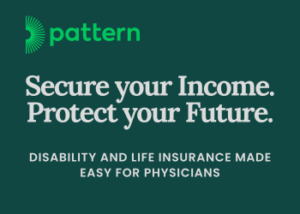Infrastructure is never quite as interesting or exciting as innovation. The grand opening of a new building incorporating all the latest integrated technology is far more exciting than bridge repairs. In our fascination for the innovation, we often turn a blind eye to our nation’s crumbling infrastructure.
In the United States today, one quarter of our bridges are structurally deficient or functionally obsolete and more than 100 levees are “at risk of failure.” Our nation’s public health infrastructure shares many commonalities with our nation’s brick and mortar infrastructure. It, too, has been neglected over the years and is only in the public eye when there is a disease outbreak or a disaster.
Bridges don’t just fall down without warning. In the months and years leading up to a catastrophic event, there is a slow and steady erosion of cracked pavement, deepening potholes, and rust. In public health, that slow and steady erosion is seen in delayed restaurant inspections, resulting in avoidable food poisoning. It’s seen in dwindling staff at local health departments, crippling their ability to respond to public health emergencies. Allowing for the decay of public health infrastructure means that health risks will go undetected and become more deadly.
Given our federal system, differences between states are to be expected. We see these differences every day in our schools or minimum driving ages. In the increasingly small and connected world we live in today, however, we have a national interest in setting a minimum standard for public health. Just as you travel to one county to go to work and another to bring your kids to soccer practice, disease travels without respect for county or city lines.
The public health infrastructure should guarantee a baseline of services and protections for all Americans, but the current state of public health is an uneven patchwork that allows far too many jurisdictions to slip through the cracks. When you are driving across the country, you don’t expect the highway to go from paved road to gravel just because you entered another state, but that is the reality with public health.
While states are responsible for highway and road maintenance, the federal government provides support to states through federal legislation designating billions of dollars for transportation projects. When it comes to public health, state health departments also receive significant federal dollars, but they often come with limiting strings attached.
Most often, federal dollars arrive at the state level pre-allocated for specific disease efforts (a few million for injury prevention here, a few million for obesity there) and rarely support overall public health infrastructure. Unsurprisingly, this has resulted in many health departments being unable to work as a cohesive unit; instead, disease specialty areas are pitted against each other with competing agendas and a limited pot of resources that often cannot be shared.
In 2014, the U.S. saw two outbreaks of emerging infectious diseases: Ebola and MERS. Both were controlled quickly, but tested our public health system’s response mechanisms and pointed to areas that require improvement. As the rapidly expanding outbreak of measles is clearly illustrating, there are many diseases that are even more infectious than Ebola and MERS that might require mass vaccinations or quarantine stations.
It is of utmost importance that every city and state is equipped to handle both the public health risks with which we are familiar as well as the ones that are still in the pipeline. As it stands now, our fragmented local public health infrastructure places the nation at significant risk for loss of life and economic disruption. However, an exciting, new conversation is starting that could provide hope for our nation’s public health infrastructure.
In 2009, the Institute of Medicine (IOM) formed a committee to consider the structure, functions, and financing of public health. The committee concluded that there was a need for a standard level of funding and services throughout the United States to support a sustainable public health governmental enterprise that can actually assure better health for all Americans.
In April 2013, the Robert Wood Johnson Foundation (RWJF) funded RESOLVE through its Public Health Leadership Forum to convene a group of national stakeholders to determine actionable paths forward for the IOM recommendations. The de Beaumont Foundation, also with RESOLVE, conducted interviews among practitioners to broaden the number, diversity, and perspectives of practitioner voices included in this burgeoning conversation leading to the first two articles on this topic to be published (From Patchwork to Package: Implementing Foundational Capabilities for State and Local Health Departments and Practitioner Perspectives on Foundational Capabilities).
Together, these early reports form the basis for a call for support for a standard package of public health services, but advocacy and action are needed. Public health leaders and advocates must elevate public health infrastructure as a priority within states and nationally.
In the past 40 years, more than a dozen major bridges, overpasses, and highways have collapsed, killing dozens of motorists; a fact that will make my next trip over a bridge a little more nerve racking.
In comparison, every year 48 million people get sick, 128,000 are hospitalized, and 3,000 die of foodborne illness — a fact that will likely stick with me next time I eat at a restaurant.
We have major infrastructure needs in many sectors in the United States. The potential impact of a failing public health infrastructure should alarm us and drive action. We can’t predict when the next outbreak, epidemic, or disaster will occur, but we can guarantee that it will take place. The question is whether we will work to fortify the public health infrastructure now or deal with the consequences later.
Brian Castrucci is chief program and strategy officer, de Beaumont Foundation. He can be reached on Twitter at @BrianCCastrucci.




















![Addressing America’s reliance on psychotropic medication [PODCAST]](https://kevinmd.com/wp-content/uploads/Design-2-190x100.jpg)


![An introduction to occupational and environmental medicine [PODCAST]](https://kevinmd.com/wp-content/uploads/Design-1-190x100.jpg)
